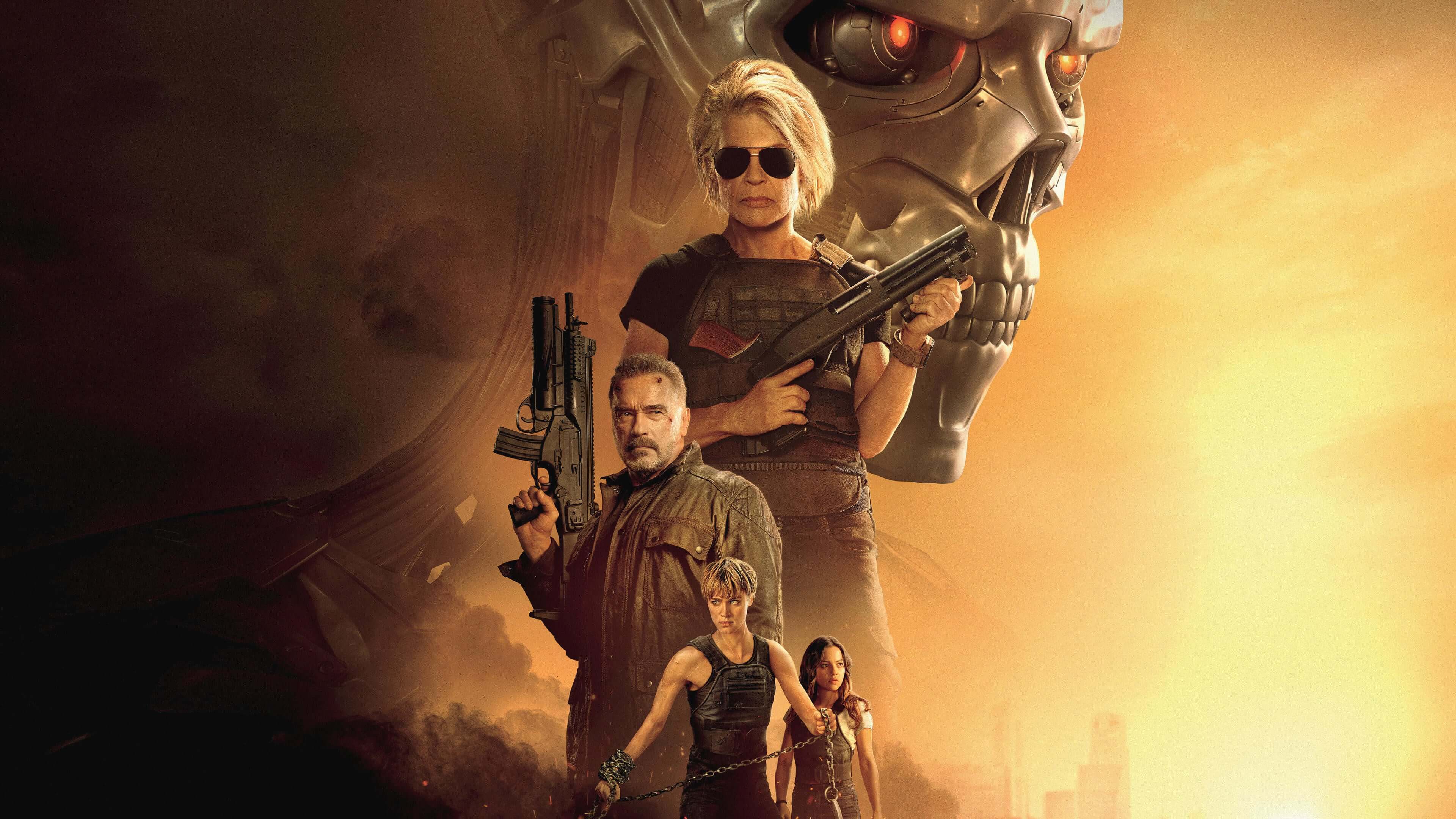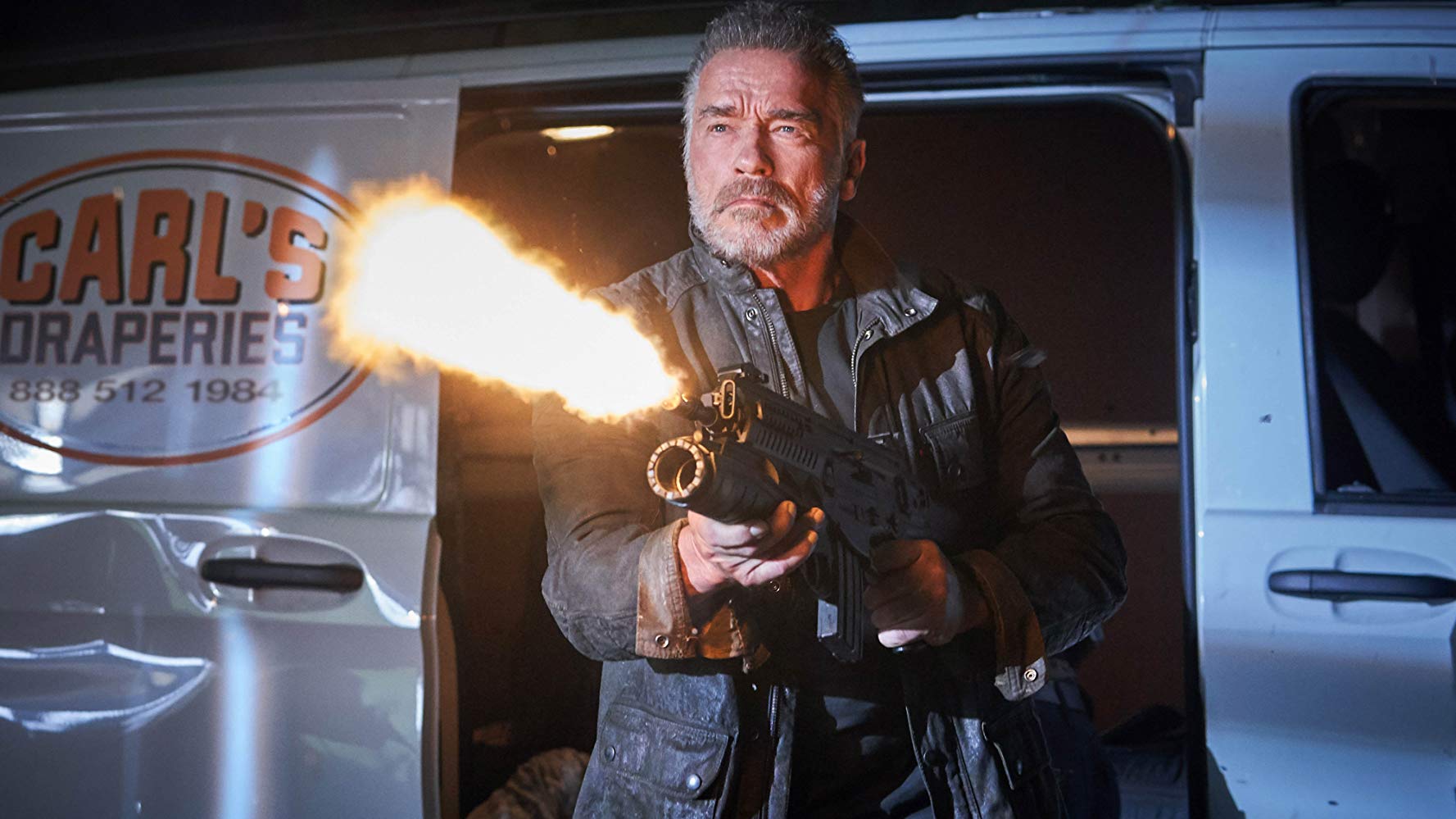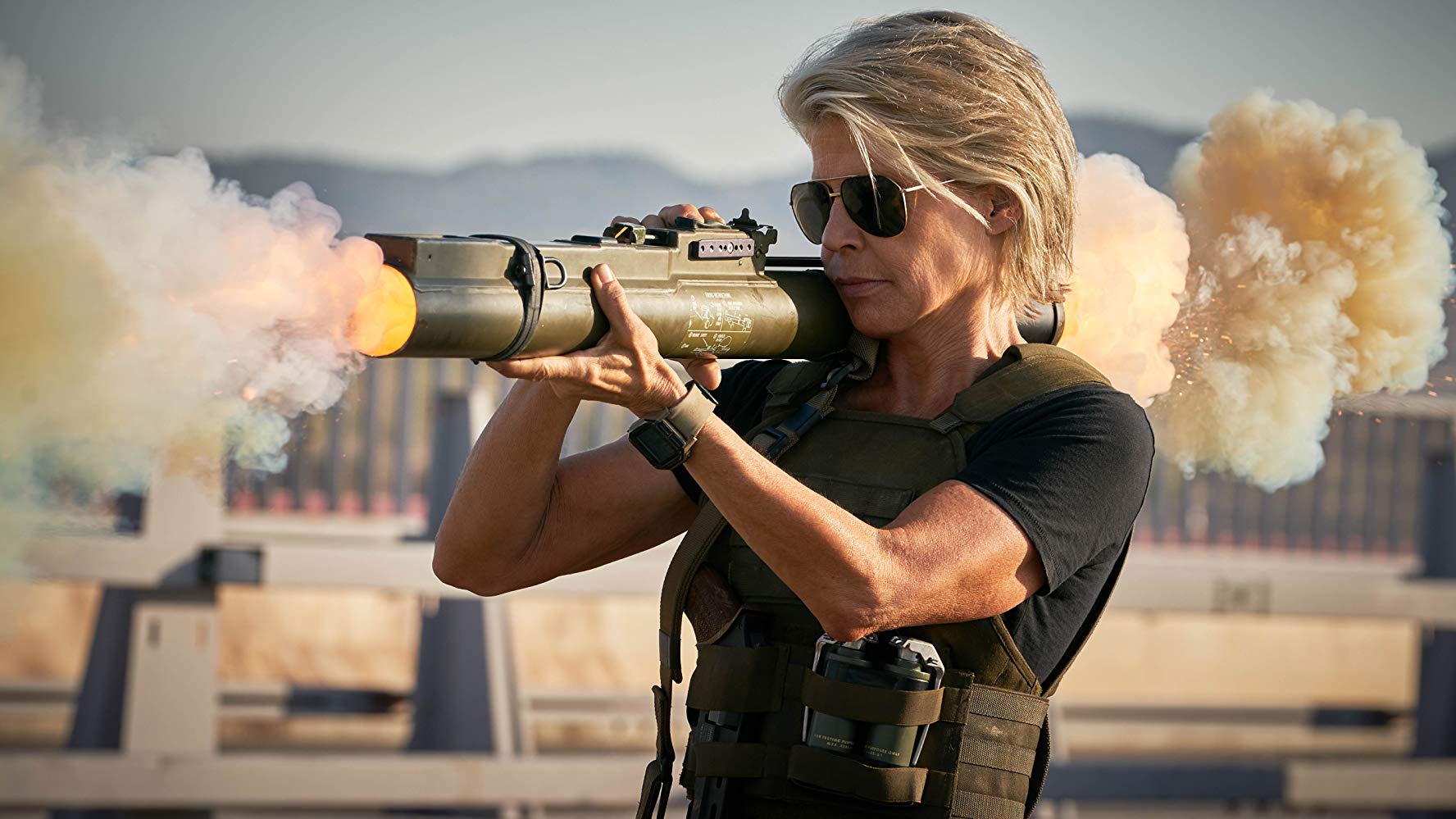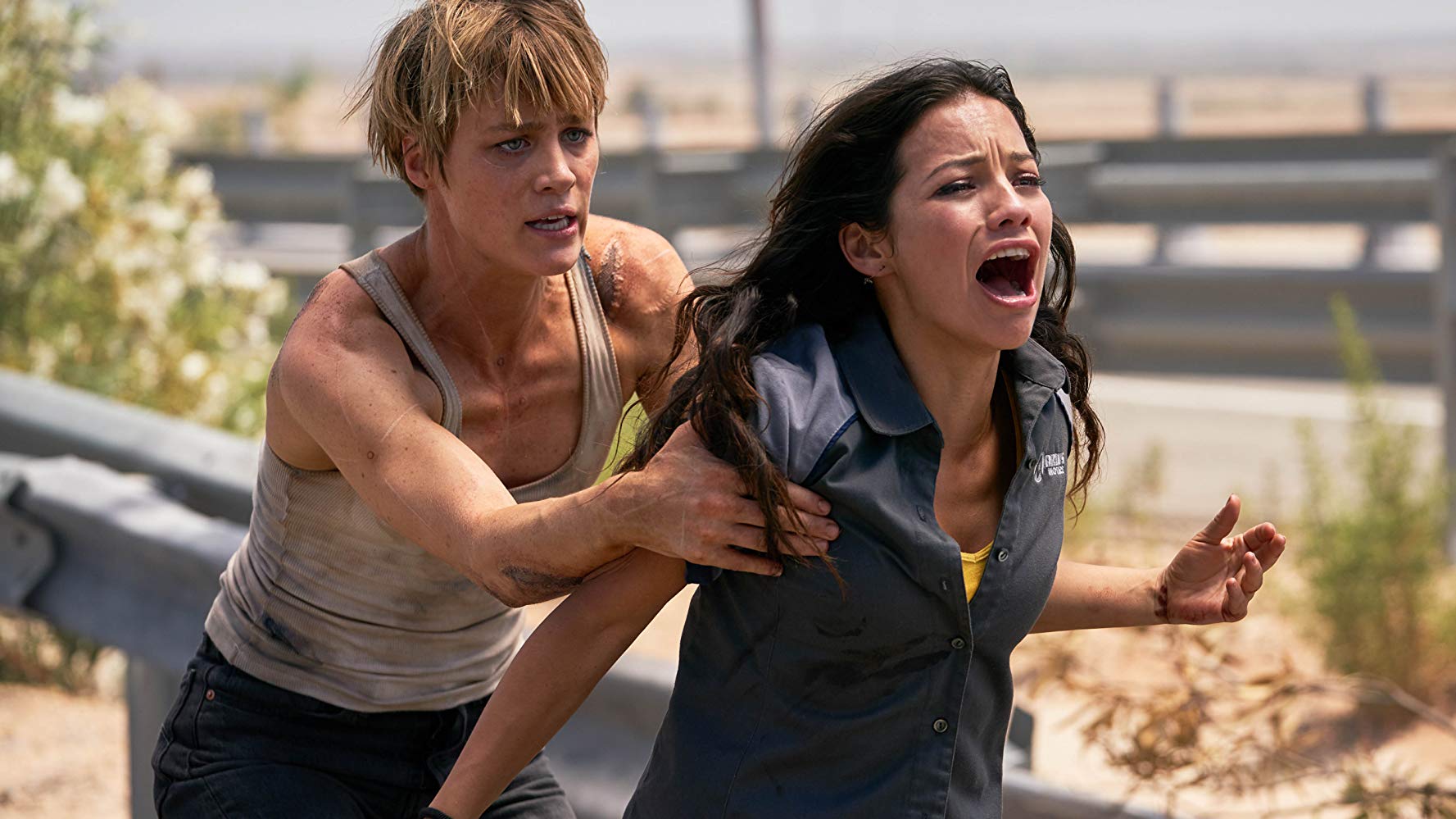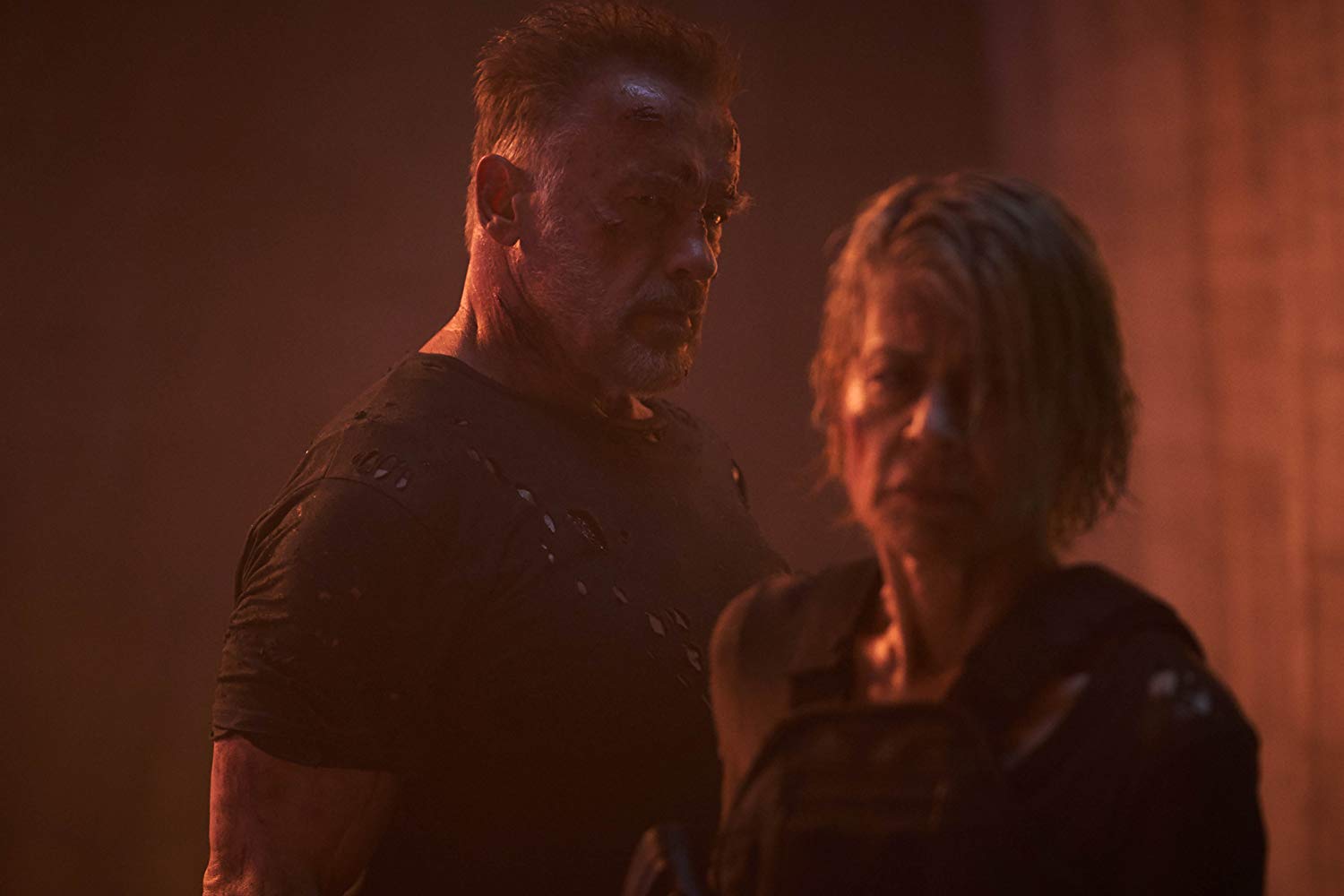Let me start this review with a story. A story unknown to many, but legendary — in a tragic sort of way — to those who know it. Back in the early 80s, James Cameron wasn’t the behemoth of a director he is today, one who helmed two $2 billion films and whose name is known even to the most casual moviegoing audience. Because he was an unknown at the time with only one terrible film — Piranha Part Two: The Spawning — to his name, nobody trusted the 20 something-year-old who had an idea to direct a little Sci-Fi horror film about a robot sent back in time to kill a teenager. Determined to bring his idea to life, Cameron sold the rights to Terminator to a producer for $1 with one condition: He would be allowed to direct the shit out of the film his way.
The Terminator would hit the silver screen in 1984 and go on to gross an unbelievable $US 78 million at the global box office with a mere $US 6.4 million budget. In 1991 (this is after he had directed Aliens) Cameron made Terminator 2: Judgement Day, a sequel that not only outdid the original in terms of artistic merit but became the highest-grossing film of that year, effectively making it one of the most recognisable franchises in cinema history and transforming Cameron into a sheer force to be reckoned with.
The problem was, since Cameron didn’t own the rights to the franchise, it bounced around like a beachball at a post-Wrestlemania WWE event from one studio to another. And Terminator films were made even when Cameron didn’t want to make them. Over the years, the franchise devolved from art pieces made by a man of a singular vision to a product of a big-studio system, put together by directors who may as well been machines in a factory and sent on a conveyor belt. Each sequel worse than what came before it.
This year, the baby gets reunited with its biological father. And boy is the father pissed and hungry to set things straight. Halle — effing — lujah!

Cameron may not be the director of Terminator: Dark Fate — he handpicked Tim Miller (Deadpool) for the task — but make no mistake, Cameron’s fingerprints are smeared all over the film. This time around, it’s unquestionably his story and he isn’t screwing around. The film is a direct sequel to Terminator 2; T3 – T5 is effectively not part of the official canon anymore. Cameron is hellbent on making you feel what generations before us felt, so much so that if you’re looking for something wholly original and inspiring, you won’t find it here. Dark Fate follows the template of Terminator 2, with elements taken from The Terminator, only remixed and repackaged for modern times.
At one point we flashforward to 2042 and the world is in complete ruins. It is grey, desolate and dusty. Billions of humans have been wiped out by machines that have taken us over. The villainous machines here, we’re told, isn’t Skynet. Skynet was stopped when Sarah Connor successfully gave birth to and protected her son, John. But humans (of the near future) never learned. Perhaps our innate tendency to f*ck up is what makes us human. We continuously pushed the boundaries of technology which eventually outsmarted us. And so we have LEGION. I chuckled and was reminded of the line in The Force Awakens where a character says, “It’s another Death Star!”
Legion is Skynet, but smarter and more ruthless. A small group of people have formed the resistance and they fight. Fight with all their might, fight till their clothes are stained with blood and limbs are ripped apart. A losing battle. We realise that the only way for us to win the fight is to send a character back in time to protect a teenager who unknowingly holds the key to humanity’s future. The machines send back someone of their own to kill this teenager. And throughout the film, the protagonists are on the run.
All of that sounds familiar, doesn’t it? But I’ll be dammed if I say the film doesn’t work. It does. Oh god, it does! Dark Fate sucks you into a familiar world, panders to your nostalgia but also provides you with a number of original ideas. More importantly, there is passion in every frame. The film is unflagging and relentless and the frames are filled with engaging characters played by actors who are alive in their roles.
Tim Miller has an eye for crafting action, which is great because this film is full of them. It’s go go go right from the start. All of the set pieces are memorable, each one distinct from what came before it. Everything is shot with precision and filled with emotional gravitas. Not only do you get to see fantastically choreographed fights and shootouts, you feel the struggle and the exhaustion of our protagonists and fear the tirelessness of the villainous robot. There are set pieces in factories, on freeways, in trucks, on top of trucks, at the US-Mexican border, in holding cells… Each action block propels the story forward in meaningful ways. The intensity and thrills build gradually. The first act hand-to-hand combat that takes place in a factory left me gasping for air that I needed to catch my breath and take a swig of my water. Even the uber bombastic set-pieces involving planes and choppers — which I was terribly worried about when I saw it in the trailer — will karate kick your ass.
But I expected a Tim Miller movie to have good action scenes, especially with Cameron’s watchful eyes. What surprised me is how much I connected to the characters, both new and old and how marvellously female-centric it is. While Terminator: Judgement Day featured a strong female character, the story still largely centred around males. The big, badass protector was a male and so was the character destined to save the future of the world. Here, the mega-star former governor of California takes a backseat and the narrative is driven by three strong but distinctly written female characters that knock it out of the park and then some. While the film is fast-paced and action-packed, Miller occasionally slows down for these characters to have smaller, more human moments. These little moments are handled wonderfully with authentic dialogue (David S. Goyer, Justin Rhodes and Billy Ray are the screenwriters) that we cling on to the characters, even the newcomers, immediately.
First up is Linda Hamilton. My word, who would’ve thought that one of the most important ingredients this franchise desperately lacked over the years was Sarah Connor or more specifically Hamilton’s portrayal of the character? Sarah is back, but this isn’t the Sarah we know from The Terminator. It isn’t exactly the same Sarah we know from T2 either. Here, she wears a weathered face of a hardened soul. The wrinkles on her forehead not only mark her age and experience but tell stories of pain and suffering and a cruel past that has been dragging at her ankles throughout the years. You see, on a warm sunny day in 1998, a year after Judgement Day was supposed to take place, while Sarah and John (very good usage of de-ageing tech) were at the beach, guards down as everything was supposedly dandy and the world was safe, a Terminator (Arnie) suddenly shows up and plants a bullet through John’s chest (the explanation is admittedly wonky — something about Skynet being decommissioned but there were a bunch of Terminators deployed before that — and no, this isn’t a spoiler).
Since that day, Sarah has been on revenge-mode, with only one thing keeping her going in life: Hunting down and killing all the remaining Terminators one by one. These days, she reacts with whatever danger that comes her way rather nonchalantly. It’s almost as if she’s become a robot herself. She even uses Arnold’s iconic “I’ll be back” line. But despite having a benumbed soul, there’s still vulnerability and warmth to her character. At one point she breaks down in tears, before collecting herself and putting on a straight face once again. Linda Hamilton plays the character with both ferocity and sincerity. She’s brilliant.
Also brilliant: Mackenzie Davis who steps in for Arnold as the new guardian angel. Unlike Arnold’s Terminator, she isn’t a reprogrammed bot but an augmented and enhanced human being named Grace. This spin creates an interesting dichotomy between the characters where it’s the being from the future who a lot of the times reacts with her heart in contrast to Sarah who’s always calculated and mostly (seemingly) emotionless. What’s also interesting about Grace, is the way she moves. Gone are the days of the lumbering heavyweights. Grace is one who fights with speed and agility of Bruce Lee as much as she does with the fierceness of an angry tiger. Mackenzie Davis oozes charisma and is equal parts sexy and badass, in a star-making performance!
Dani Ramos (Natalia Reyes) is a mixture of Sarah Connor from T1 and John Connor from T2 but more mature and resolute. She’s a teenager from a slightly underprivileged but very loving family. Despite having to be not just daughter and sister but also a pseudo-mom, she’s genuinely happy. She’s the kind of person who will make your day brighter just by being in your vicinity. Suddenly everything gets taken away from her; Suddenly she’s thrust into a dire sh*t show of a situation and told that she’s the key. And so she runs. But there’s something more profound and discomforting about her running than say when Sarah Connor was on the run: her Mexican heritage. So her attempt to escape from a ruthless machine doubles as an allegory for the plight of Mexicans in real life. At one point, she asks her uncle to take her and her new compadres across the border. The uncle is unphased by the idea of a super robot from the future who’s hunting them. He tells her they’re always on the run anyway. It’s bits of writing like this that makes Dark Fate feel fresh and current, despite following the same template as Cameron’s originals.
At one point, Dani, a character who has never shot a bullet before, misses during target practice. After a couple of attempts, she shoots a target as accurately as John Wick would. This isn’t logical. But I’ve always been one to care about the emotional logic of a film more than the logical logic. Between her missing the shot and nailing the shot, is one Sarah Connor who reminds her of her dead family and asks her what she would like to do to that son of a bitch when he shows up? And what should’ve been an implausible scene morphs into a believable moment of absolute sincerity.
And Arnold? The beefy perfectly sculpted man became an icon for his one-note but haunting work in T1 and his undeniable charisma in T2. Here, Arnold sheds his icon imagery for a performance that is delicate and heartbreaking. There’s still an intoxicating cool-factor about him, but his hair and beard is grey. His voice is always calm and polite. He’s funny and sweet. He’s more actor than star. At one point, he picks his sunglasses up, looks in the mirror and you can’t wait for him to put it on. You want to cheer and clap. But THE TERMINATOR just calmly places the shades back on the counter and dons a look that welcomes us into his soul. Here, Arnold delivers his most emotionally poignant work to date.
Terminator: Dark Fate needed to achieve a couple of things not unlike The Force Awakens. One, it needed to bring back fond memories remind us what made this franchise great in the first place. Two, it needed to inspire a whole new generation of moviegoers into becoming fans, by giving us new characters we can attach ourselves too. It succeeded with flying colours on both fronts.
Yes, it follows the template of the original two films and yes, it panders to our nostalgia, but it does so with utmost earnestness and in a manner that is emotionally resonant. But now, the reliance on nostalgia needs to end. The similar beats need to end. For the franchise to truly thrive moving forward, Cameron has to do what Rian Johnson did with The Last Jedi. In the words of Kylo Ren: “Let the past die, kill it if you have to.”
Terminator: Dark Fate is currently screening in Malaysian cinemas.
Follow us on Instagram, Facebook, Twitter or Telegram for more updates and breaking news.


